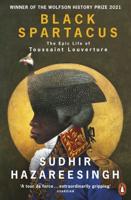Publisher's Synopsis
*Includes pictures
*Includes online resources and a bibliography for further reading
"A cowardly man thinks he will ever live, if warfare he avoids; but old age will give no peace, though spears may spare him." - old Norse proverb from the Viking Age
In the autumn of 1911, an eye-watering mass of French citizens gathered around a churchyard in the heart of Rouen to celebrate the millennial anniversary of Normandy. A suspenseful hush fell over the congregation as a city official strode to the front of the crowd, placing his hands upon the large cloth draped over the mysterious statue. With a flick of his wrists, he unveiled an exquisite marble effigy of a handsome warrior, depicted with curly locks and a lush beard, with one hand wrapped around the handle of his sheathed sword as he gazed into the distance. The statue was of none other than Rollo the Viking, father of the Duchy of Normandy.
Over the centuries, the West has become fascinated by the Vikings, one of the most mysterious and interesting European civilizations. In addition to being perceived as a remarkably unique culture among its European counterparts, what's known and not known about the Vikings' accomplishments has added an intriguing aura to the historical narrative. Were they fierce and fearsome warriors? Were they the first Europeans to visit North America? It seems some of the legends are true, and some are just that, legend.
The commonly used term, Viking, for the trading and raiding peoples of Scandinavia may have originated from Viken (the large bay leading to Oslo), or it may have come from the Old Scandinavian words Vikingr (sea warrior) or Viking (expedition over the sea). The people from the north were known in Western Europe at the time as Northmen or Danes, in England as Danes or pagans and in Ireland as Finngall for those of Norwegian origin and Dubgall for those from Denmark. In the east, in Russia and in the Byzantine Empire, the Scandinavians were called Vaeringar or Varyags (Varangians) or Rus', the latter perhaps derived from the name Roslagen, a province in Uppland in Sweden.
The ubiquitous picture of the Vikings as horn-helmeted, brutish, hairy giants that mercilessly marauded among the settlements of Northern Europe is based on a smattering of fact combined with an abundance of prejudicial historical writing by those who were on the receiving end of Viking depredations. At the same time, much of the popular picture of the Vikings is a result of the romantic imagination of novelists and artists. However, the Vikings' reputation for ferocious seaborne attacks along the coasts of Northern Europe is no exaggeration. It is true that the Norsemen, who traded extensively throughout Europe, often increased the profits obtained from their nautical ventures through plunder, acquiring precious metals and slaves. Of course, the Vikings were not the only ones participating in this kind of income generation; between the 8th and the 11th centuries, European tribes, clans, kingdoms and monastic communities were quite adept at fighting with each other for the purpose of obtaining booty. The Vikings were simply more successful than their contemporaries and thus became suitable symbols for the iniquity of the times. And among the Vikings, few were as successful as Rollo.
Rollo the Viking: The Life and Legacy of the Viking Ruler Who Conquered Normandy chronicles the life of the great warrior, dives into his many adventures and exploits, and examines just how this lone wolf managed to conquer his foes. Along with pictures depicting important people, places, and events, you will learn about Rollo the Viking like never before.








